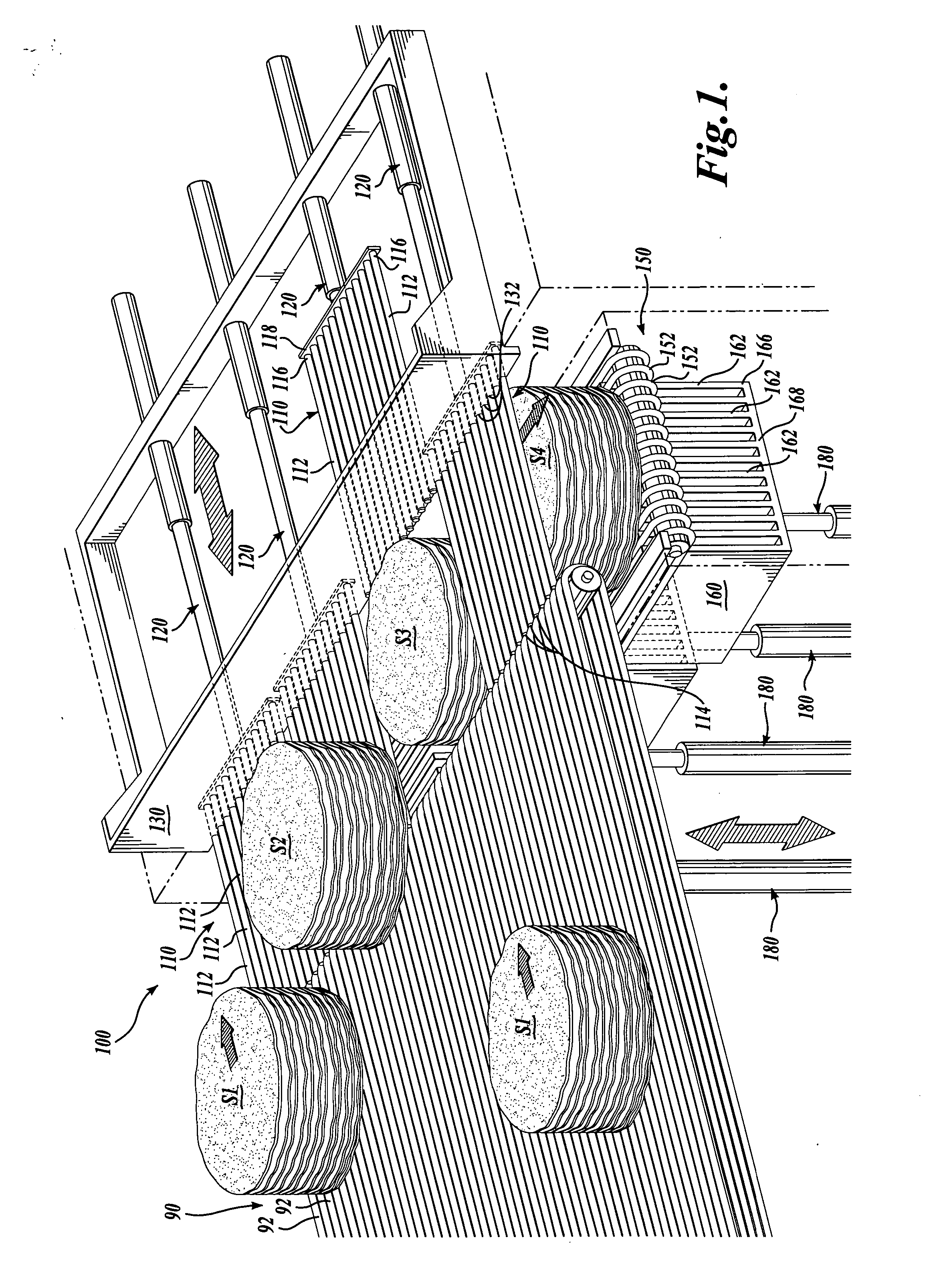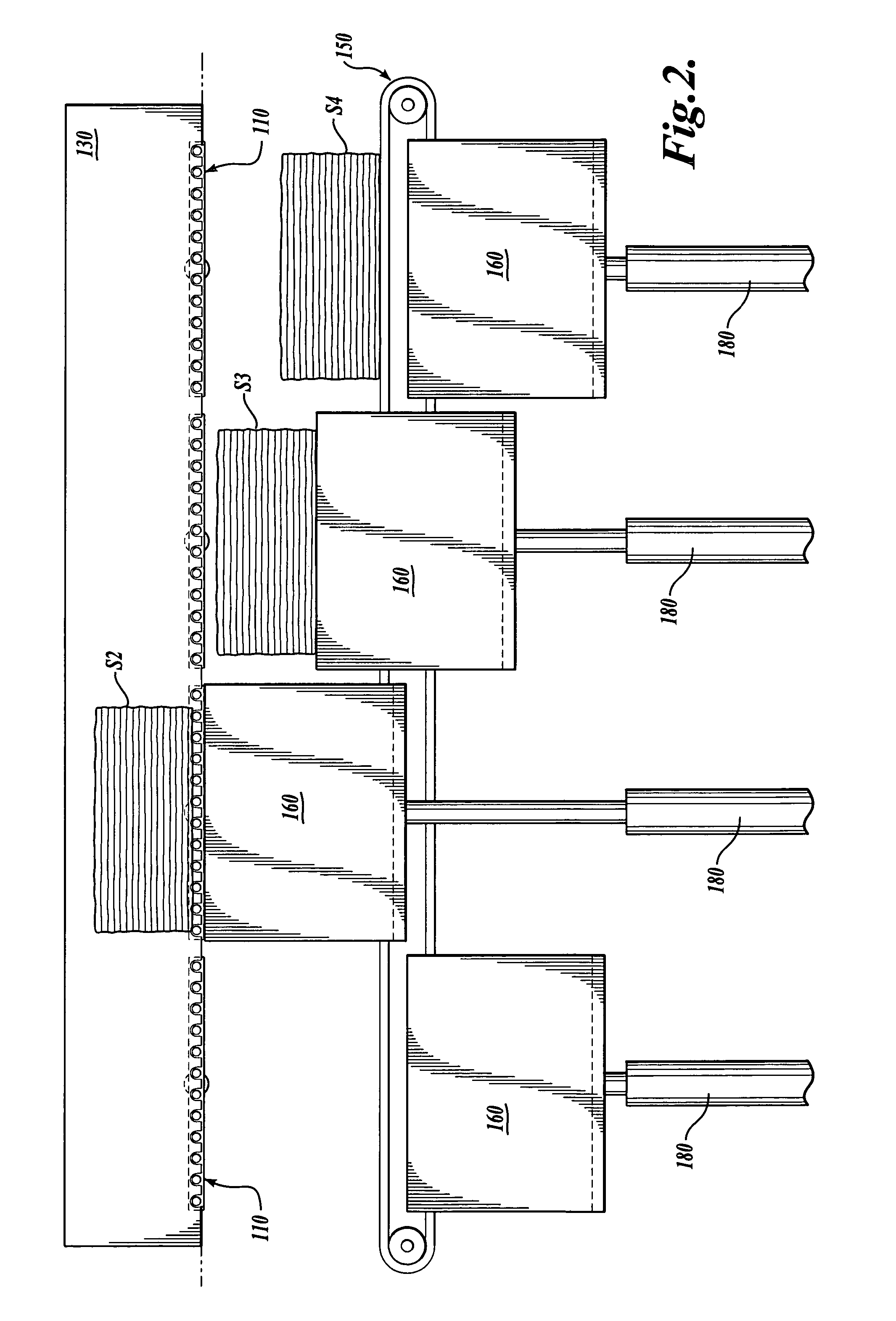Automatically aligning stacks of planar food product
- Summary
- Abstract
- Description
- Claims
- Application Information
AI Technical Summary
Benefits of technology
Problems solved by technology
Method used
Image
Examples
Embodiment Construction
[0017] Referring now to the figures, wherein like numbers indicate like parts, a description of a preferred embodiment of the present invention is described to help the artisan understand the invention.
[0018]FIG. 1 shows a perspective view of a simplified conveyor transfer apparatus 100 according to the present invention, wherein conventional and well-known structures, such as support structure and drive mechanisms, are removed in order to better show the novel aspects of the present invention, and FIG. 2 shows a front view of the conveyor transfer apparatus 100. A portion of a conventional multi-row conveyor 90 is shown transporting several stacks S1, S2, S3, S4 of flat product, such as tortillas, from a previous processing apparatus such as a stacker (not shown) to the transfer apparatus 100. In the disclosed embodiment the multi-row conveyor 90 includes a plurality of parallel, spaced-apart, endless-loop conveyor belts 92.
[0019] The stacks S1, S2, S3, S4 are shown generally in ...
PUM
 Login to View More
Login to View More Abstract
Description
Claims
Application Information
 Login to View More
Login to View More - R&D
- Intellectual Property
- Life Sciences
- Materials
- Tech Scout
- Unparalleled Data Quality
- Higher Quality Content
- 60% Fewer Hallucinations
Browse by: Latest US Patents, China's latest patents, Technical Efficacy Thesaurus, Application Domain, Technology Topic, Popular Technical Reports.
© 2025 PatSnap. All rights reserved.Legal|Privacy policy|Modern Slavery Act Transparency Statement|Sitemap|About US| Contact US: help@patsnap.com



